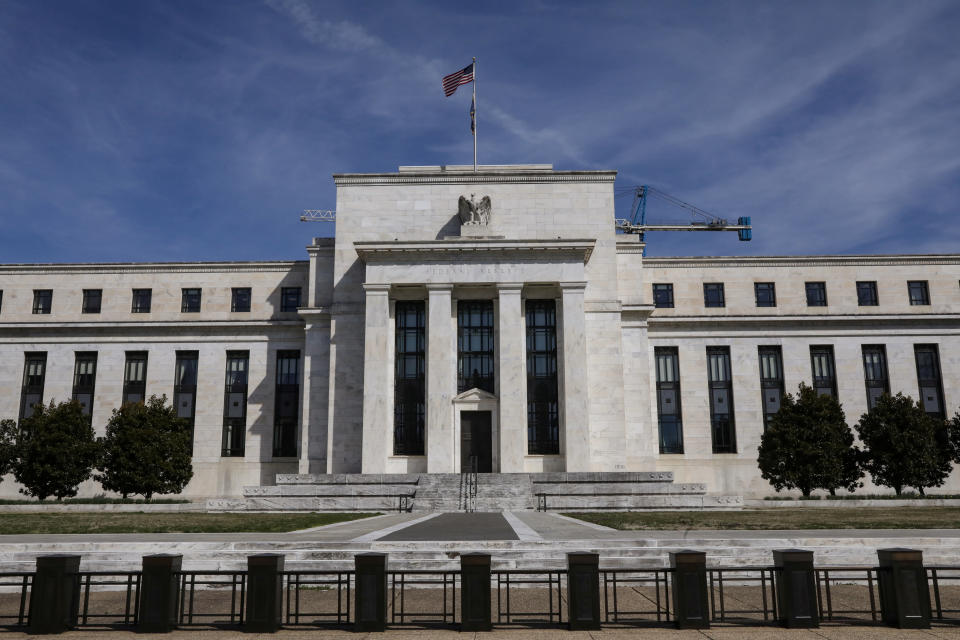Fed walks tightrope on loosening bank regulations amid coronavirus response
As part of its armory of policy tools unleashed over the past few days, the Federal Reserve is encouraging banks to tap into their capital and liquidity buffers to support lending amid the coronavirus outbreak.
But large banks are floating the possibility of further regulatory easing, arguing that temporarily loosening some post-crisis regulations would better support households and businesses looking for financing.
In a note entitled “regulatory mountains may need to be moved,” Bank of America’s cross asset strategy team warned that lending standards are tightening amid other market volatility.
“We think a temporary emergency easing of various regulations would be necessary to ease the flow of credit and avoid unnecessary financial stress in the context of the ongoing pandemic,” BofA’s research team, which is separate from the bank’s lobbying team, wrote Tuesday. “We do not think such easing would constitute any threat to bank balance sheet strength or in any way reduce their defensiveness.”
Former Fed Governor Randall Kroszner told Yahoo Finance that suggested measures on paring back regulations like the global-systemically important bank (G-SIB) surcharge or the liquidity coverage ratio would be helpful as banks try to support the economy through the coronavirus concerns.
“That’s key: they’ve got to give confidence to the banks that the Fed is serious and that it’s okay for the banks to be doing a little bit more lending now, especially to small and medium sized enterprises,” Kroszner said. Kroszner served as a Fed governor between 2006 and 2009, during which he chaired the Fed’s committee on supervision and regulation.
Former Federal Deposit Insurance Corp. Chair Sheila Bair wrote in Yahoo Finance Wednesday that regulatory relief can be justified during times of stress, since banks need to be free to lend in order to counteract the negative economic consequences.
But Bair worries of “unnecessary and dangerous loosening of rules — rules that are designed to keep the financial system safe and stable in times like these.”
Capital and Liquidity
The regulations in question generally concern two key principles in banking: capital and liquidity.
Bank capital is broadly defined as assets minus liabilities and measures the loss-absorbing equity that a firm can rely on in possible distress. Liquidity, meanwhile, generally measures the ease by which a bank can unwind its assets into cash.
On capital, BofA writes that the Fed can ease the calculation of the G-SIB surcharge, an added capital requirement on the eight largest U.S. banks. The size of the surcharge is unique to each bank, but BofA writes that the Fed can recalibrate the calculation of the G-SIB surcharge without impacting capital strength.

“Based on conversations with the banks, we think G-SIB recalibration has been entertained as a possibility by regulators,” BofA wrote.
On liquidity, the note suggested clarity from the regulator about allowing banks to fall below minimums on the liquidity coverage ratio, or LCR, which requires banks to hold enough liquidity over a theoretical 30-day period of stress.
The minimum LCR for the largest banks is currently 100%, but banks have argued in the past that the level is too high and traps excessive high quality liquid assets inside the bank when it could be lending it out to households and businesses.
Other regulations
The primary banking regulators had already provided loose guidelines on capital and liquidity, telling banks this week that banks should feel free to tap into buffers above regulatory minimums and lend into the economy.
The BofA note floated other possible regulatory tweaks targeting the Volcker rule and Regulation W.
The Volcker rule is a key post-crisis regulation largely limiting U.S. banks from engaging in short-term proprietary trading of securities, derivatives, and commodities. Critics have accused the Volcker rule of constraining bond market liquidity.
Regulators have already made efforts to pare back portions of the rule but strains in the bond market, particularly in corporate debt, now raises questions about whether or not temporary changes could be made.
“You could certainly see the five agencies coming together and temporarily waiving certain restrictions allowing banks to take on more proprietary risk on their balance sheets within limits for certain markets,” said Milbank LLP partner Doug Landy.
Landy, also a former New York Fed lawyer, added that he could see the Fed temporarily waiving Regulation W, which restricts transactions between a bank and its dealer subsidiaries. As the Fed encourages banks to borrow from emergency loans from the discount window, Landy says the regulators would want the money to be able to flow freely to the subsidiaries.
Nellie Liang, formerly the director of the Fed’s financial stability division, told Yahoo Finance that loosening rules are broadly acceptable if the baseline assumption is that regulatory changes after the financial crisis already built up substantially high levels of strength within the banking industry.
Liang, now a fellow at the Brookings Institution, said stress tests and post-crisis requirements have the banks in a healthy position to lend.
“This is sort of a test of cyclical macroprudential policies,” Liang said.
Brian Cheung is a reporter covering the Fed, economics, and banking for Yahoo Finance. You can follow him on Twitter @bcheungz.
Federal Reserve reopens crisis-era primary dealer credit facility
Regulator open to allowing non-bank companies to build banking businesses
Fed unleashes commercial paper funding to support non-bank companies
Federal Reserve still has 'bazookas left in the war chest' to counter coronavirus
Federal Reserve slashes rates to zero, restarts QE in emergency Sunday announcement
Read the latest financial and business news from Yahoo Finance
Follow Yahoo Finance on Twitter, Facebook, Instagram, Flipboard, SmartNews, LinkedIn, YouTube, and reddit.


